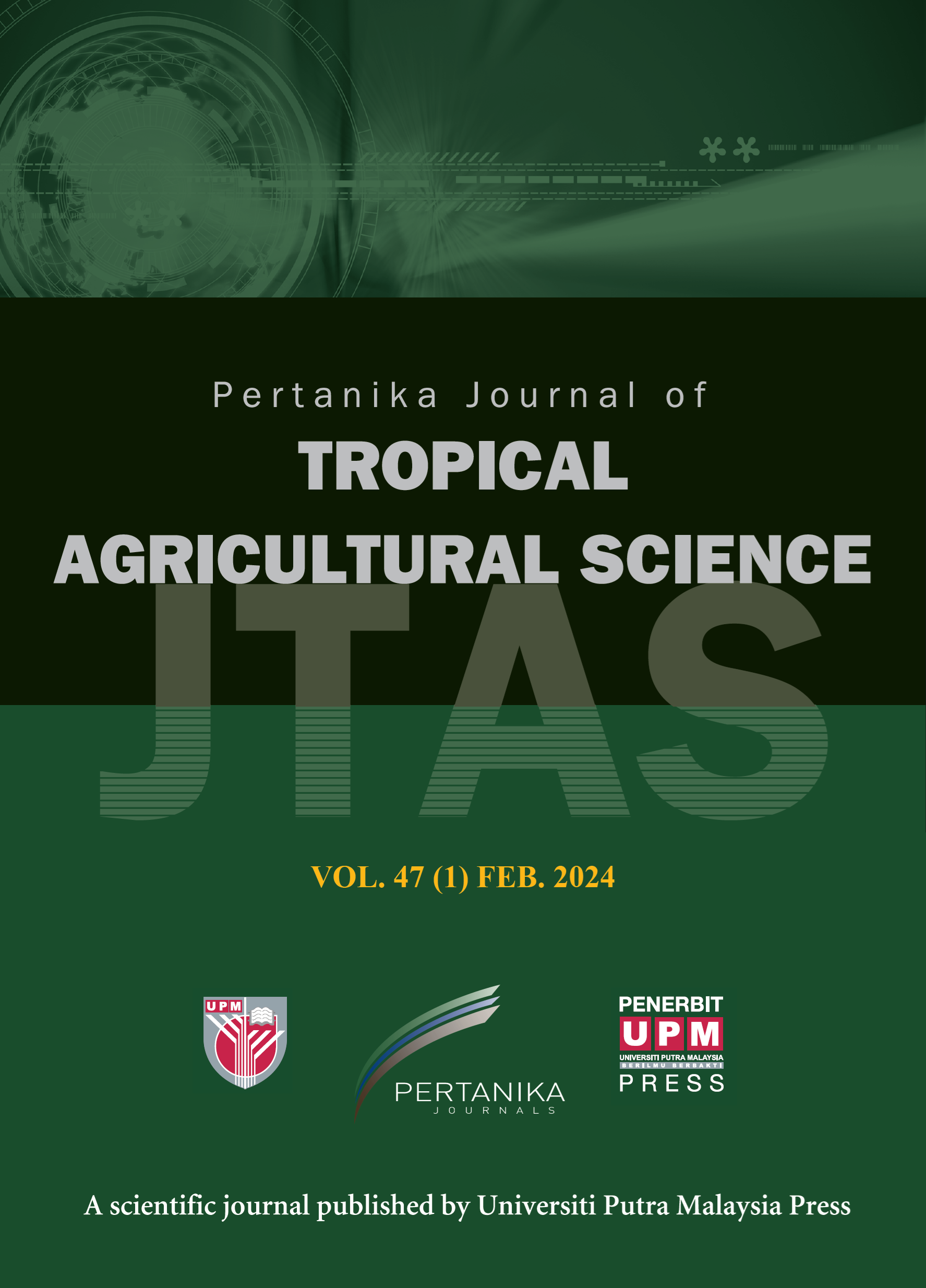PERTANIKA JOURNAL OF TROPICAL AGRICULTURAL SCIENCE
e-ISSN 2231-8542
ISSN 1511-3701
Antagonistic Potential and Plant Growth Enhancement by Endophytic Bacillus Isolated from Citrus Plants
Erika Ananda Putri, Elvi Yuningsih, Siti Subandiyah, and Tri Joko
Pertanika Journal of Tropical Agricultural Science, Volume 48, Issue 6, November 2025
DOI: https://doi.org/10.47836/jtas.48.6.24
Keywords: Antibacterial, antifungal, plant-beneficial traits, PCR, 16S rDNA
Published on: 2025-11-25
Citrus is a horticultural commodity with high economic value. However, citrus production is constrained by various plant diseases caused by infectious pathogens. Endophytic bacteria that live in plant tissues can function as plant growth promoters and biological control agents by producing growth hormones and encoding antibacterial and antifungal genes. This study aimed to isolate endophytic Bacillus from citrus plants as plant growth-promoting bacteria. Endophytic bacteria were initially isolated from citrus leaf tissue, followed by morphological characterization and KOH tests and the detection of growth-encoding (ipdC, acdS, pqqE, and nifH), antibacterial (aiiA and sfp), and antifungal (fenD, bamC, and ituA) genes with specific primers. Thereafter, antagonistic tests against Colletotrichum sp. were performed, and the Bacillus isolates were applied to citrus seedlings. Ten Bacillus isolates were obtained from different locations. Detection of the plant-beneficial traits encoding genes showed that the isolate BYL-4 had all the genes encoding for growth, antibacterial, and antifungal properties. Antagonist testing was performed using the dual culture and coculture methods, which revealed that the SH-1, SH-2, SH-3, BYL-1, BYL-2, BYL-3, B2B, M2, and P4 isolates were able to inhibit the growth of Colletotrichum sp. Based on the application of the Bacillus isolates to seedlings, the Bacillus BYL-3 isolate significantly increased the height, fresh weight, dry weight, and root weight of the citrus plant seedlings. Molecular identification using conventional PCR was performed with a pair of universal 16S rRNA primers, 27F/1492R, with an amplification target of ±1500 bp, followed by Sanger sequencing. This showed that the isolated endophytic bacteria were closely related to two Bacillus species, namely Bacillus subtilis subsp. subtilis and Bacillus tropicus.
ISSN 1511-3701
e-ISSN 2231-8542




